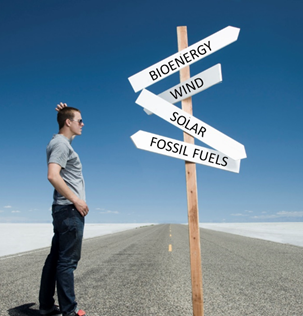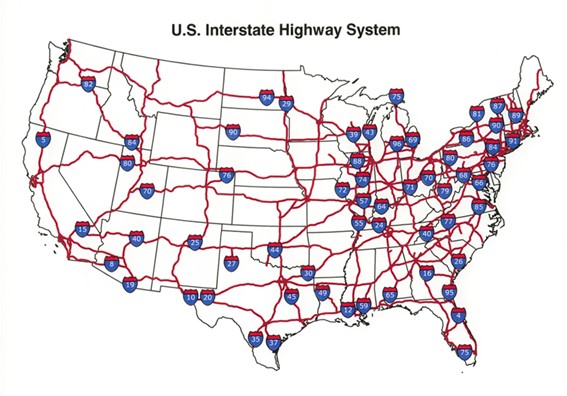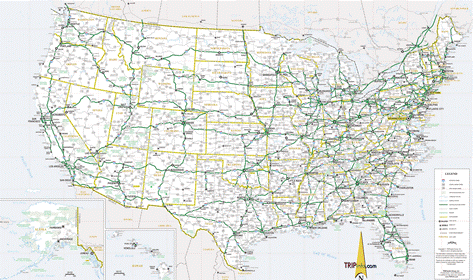
Earlier this month, the USDA, along with the EPA and DOE, published a Biogas Opportunities Roadmap report describing steps that these three Federal Agencies will take to further biogas development in the United States. As stated in this report, the Roadmap outlines strategies to overcome barriers currently inhibiting the development of a robust biogas industry in the U.S., creating jobs and bolstering our economy. In addition to economic benefits, the Roadmap aims to inform the public on the benefits derived from biogas development relative to reduced GHG emissions and environmental quality improvements.
Biogas and bioenergy resources present an enormous opportunity for renewable energy development, and progression toward energy independence for the U.S. According to the report, the U.S. currently has more than 2,000 active biogas harvesting sites, but claims more than 11,000 additional sites can be developed in the U.S., with the potential to power more than 3 million American homes if used to fuel electricity generating power plants. In addition to using biogas to fuel electricity generators, biogas can be used as a transportation fuel, in the form of compressed natural gas (CNG), liquefied natural gas (LNG), or fuel cells. These uses of biogas may even be more beneficial and efficient than using generating electricity. Where there are several options for non-fossil-fuel electricity generation (wind turbines, solar, hydropower, and even nuclear), only electric vehicles and CNG have been presented as alternative fuels in the transportation sector. Further development of the U.S. Biogas Roadmap should illustrate seeking the balance in fuel diversity for electricity generation, while creating competition in the transportation fuel sector that may positively affect fuel prices, both domestically and abroad. In cities where attainment of sufficient air quality to comply with Federal emission and contaminant standards is challenging, a common strategy is the use of CNG-fueled buses. More and more trucking fleets are converting to CNG (where fueling infrastructure exists) to take advantage of a significant fuel cost savings as compared to diesel fuel.
In addition to energy, the report describes additive, valuable offtakes that may be realized, such as reduced landfilling, improved nutrient recovery, and innovative biopharmaceuticals. For example, the EPA estimates the largest contributor to landfill waste in the U.S. is food waste, which comprises nearly 30% of landfilled materials. This massive amount of food waste not only represents a significant loss for feeding a growing population (see my other discussions on the Food-Water-Energy Nexus issues), but consumes a significant amount of landfill capacity. Although much of these organic materials are eventually transformed to methane in the landfill, the capacity has already been allocated, and the land consumed for landfilling. As noted in this Roadmap document, many landfills still do not harvest this methane, or if they do, simply flare the methane – wasting the energy value. These food wastes also have tremendous nutrient value, which is again wasted through landfilling. Biogas systems offer opportunities to quickly harvest the methane and nutrients as compared to the waste associated with landfilling these materials. Diversion of food wastes to biogas systems leaves more of our precious landfill capacity for disposal of other materials we have not yet figured out how to effectively reuse or repurpose.
Keypoints of the U.S. Biogas Roadmap:
- Improve existing USDA, EPA, and DOE programs to better promote biogas utilization: All three of these agencies have programs that currently support biogas system development, or may be improved to better promote the development of U.S. biogas resources. These programs offer both technical and financial assistance to biogas system developers, policy makers, and local agencies. These agencies commit, as stated in the report, to leverage over $10 million in research funding to further develop biogas utilization and the development of additional, valuable offtakes. Hopefully, some of these funds will bolster the efforts of Universities and Foundations that are leading the charge for developing biogas resources in the U.S.
- Foster investment in biogas systems: Of the many barriers to biogas development, lack of information and access to confident data are significant. USDA commits in the Roadmap to implement improved performance tracking systems for existing biogas systems, particularly existing anaerobic digestion systems, to improve access to data and information and reduce perceived risks associated with these systems. All three agencies commit to review existing grant and loan programs for opportunities to broaden financing opportunities for biogas systems, and review Federal procurement programs to ensure that biogas and biogas products are eligible for, and promoted for, procurement. In my opinion, this effort should be further supported through Federal goals for procurement of biogas and biogas products, such as transportation fuels for Federal fleets of vehicles.
- Improving biogas market vitality: Efforts to strengthen existing programs that promote the use of alternative biofuels, such as biogas, for transportation systems are mentioned in the report, but most important, in my opinion, is the commitment to removing barriers to direct injection of purified biogas into the existing natural gas pipeline network. Inconsistent expectations among gas utilities, coupled with a lack of Federal performance standards, have resulted in great difficulty in obtaining support and approval to supply existing natural gas customers with U.S. biogas. Biogas represents and infinitely renewable form of clean energy for the U.S., and establishing paths to its safe, broad-scale utilization provides long-term security for the U.S. energy market. These agencies also commit in the Roadmap to modernizing Federal incentives for renewable energy generation, but does not describe what ‘modernizing’ may mean. The commitment to develop and provide biogas market analysis will be very helpful in communications with the public, investors, and policy-makers.
- Improved communication and collaboration: The most common barrier to furthering U.S. biogas development is lack of information and understanding on the part of policy-makers, investors, and the public. To address this black hole of information, the USDA, EPA, and DOE commit to create a Working Group to collaborate with industry to prioritize policies to expand the U.S. biogas industry. The Working Group will also be charged with identifying research gaps relative to biogas use and offtake creation. While this effort to bring together industry efforts is needed, and will be beneficial, the Roadmap falls short of committing to a communications plan for disseminating this information to elected leaders and the public. Without a solid communication and education strategy, the products of the Working Group will simply add to the body of knowledge of only a few. To truly expand the beneficial use of the U.S. biogas resources, these agencies need to further commit to broad public educations programs, akin to Energy Star and WaterSense, that truly heighten the understanding of the public and our elected leaders, so that they may make more informed decisions and take more effective actions.
The Roadmap is a great start to a much needed dialogue, but is analogous to a map of the U.S. Interstate Roadway system.


Figure 1. Comparative ‘Roadmaps’
While such a map identifies the major pathways to get between major points of interest, there is much more detail needed to reach our desired destination. My hopes are that state and local units of governments and agencies will take up the Roadmap and improve the resolution as it pertains to their jurisdiction. As an example, my home state of North Carolina has some of the richest bioenergy resources in the U.S., stemming from animal manures, municipal wastes, and landfills; yet N.C. lacks a similar Roadmap specific to the state for identifying and overcoming the barriers to development of these rich resources. Adding the highways, local roadways, and alternate routes to this Roadmap specific to our state can serve to catalyze action, with measurable results. As a friend of mine recently stated, North Carolina is the ‘Saudi Arabia’ of bioenergy, and we are just now beginning to dig the first well. We need to develop a clear plan for developing these valuable biogas resources to promote environmental sustainability and economic growth of our bioenergy sector.
A copy of the U.S. Biogas Roadmap can be viewed at http://www.epa.gov/climatechange/Downloads/Biogas-Roadmap.pdf
More information about the Food-Energy-Water Nexus can be viewed on my Bioenergy Blog.

